Dieser Atlas lenkt den Blick zurück in die Vergangenheit des Baltischen Bernsteins und in die eozänen Bernsteinwälder. Auf 92 ganzseitigen Farbtafeln werden ca. 650 Pflanzen und Tiere exemplarisch und in systematischer Folge dargestellt. Der begleitende Text und das ausführliche Literaturverzeichnis vermitteln einen aktuellen Überblick über die Systematik, Paläontologie und Biologie der fossilen Pflanzen und Tiere. Wer sich über Bernstein und seine Einschlüsse erfreuen kann, wer eine breite Kenntnis über die Inklusen des Baltischen Bernsteins erwerben möchte und wer ein wissenschaftlich redigiertes Nachschlagewerk sucht, der hat mit diesem Atlas ein wertvolles Buch über den Baltischen Bernstein gefunden.
Atlas of Plants and Animals in Baltic Amber (E-Book)
2013. [Englisch] – 256 Seiten, 92 Farbtafeln mit 594 Abbildungen, 31 farbige und 93 Schwarzweißabbildungen im Text.
29,0 x 21,7 cm, Hardcover.
Dieses Buch ist nur digital als E-Book Version (PDF) erhältlich!
Dieses Buch ist auch in Deutsch erhältlich.
75,00 €
1 Introduction 9
1.1 Basic information on amber 9
1.1.1 Resin – Copal – Amber 9
1.1.2 Amber – The "burning stone" 9
1.1.3 Amber deposits 9
1.1.4 Geographical origins of amber 10
1.1.5 The age of amber 10
1.1.6 The source of amber 11
1.2 Genesis of Baltic amber 11
1.2.1 Overview 11
1.2.2 Natural shapes of amber 12
1.2.3 Color and transparency of amber 13
1.2.4 The resin-producer 13
1.3 Distribution of Baltic amber 17
1.4 Baltic amber deposits 22
1.4.1 Blue earth of the Samland Peninsula 22
1.4.2 Ukrainian amber 23
1.4.3 Bitterfeld deposits 25
1.4.4 Bitterfeld amber inclusions 26
1.5 The climate at the time of Baltic amber 27
1.6 Fossils in Baltic amber 29
1.6.1 Inclusions 29
1.6.2 The fossilization process 29
1.6.3 Stability and aging 30
1.6.4 Tissue preservation 31
1.7 Flora and fauna of Baltic amber 33
1.7.1 Significance of resin preservation 33
1.7.2 Plant inclusions 34
1.7.3 Animal inclusions 34
1.7.4 Scenes of life in amber 35
1.8 Aquatic insects in Baltic amber 36
1.8.1 Aquatic fauna 36
1.8.2 Aquatic biotopes of the 'amber forest' 37
1.9 Biogeographical aspects 38
2 Flora and Fauna of Baltic amber 40
2.01 Ferns – Pteridophyta 40
2.02 Mosses and liverworts – Bryophyta 42
2.03 Flowering plants: gymnosperms – Spermatophyta: Gymnospermae 44
2.04 Resin-producing conifers – Spermatophyta: Gymnospermae 46
2.05 Flowering plants: angiosperms – Spermatophyta: Angiospermae 48
2.06 Systematic overview of the flowering plants in amber – Spermatophyta 50
2.07 Worms – Nematoda, Annelida 52
2.08 Snail shells in Baltic amber – Mollusca: Gastropoda 54
2.09 Scorpions in Baltic amber – Arachnida: Scorpiones 56
2.10 Pseudoscorpions – Arachnida: Pseudoscorpiones 58
2.11 Phoresy in pseudoscorpions – Arachnida: Pseudoscorpiones 60
2.12 Harvestmen – Arachnida: Opiliones 62
2.13 Mites – Arachnida: Acari 64
2.14 Parasitism and phoresy in mites – Arachnida: Acari 66
2.15 Spiders in Baltic amber – Arachnida: Araneae 68
2.16 Frequency of amber spiders – Arachnida: Araneae 70
2.17 Climatic environment of amber spiders – Arachnida: Araneae 72
2.18 Biogeography of the amber spiders – Arachnida: Araneae 74
2.19 Spider webs in Baltic amber – Arachnida: Araneae 76
2.20 Brood care in amber spiders – Arachnida: Araneae 78
2.21 Crustaceans – Crustacea: Ostracoda, Isopoda, and Amphipoda 80
2.22 Myriapods – Myriapoda: Chilopoda, Symphyla, and Pauropoda 82
2.23 Myriapods – Myriapoda: Diplopoda 84
2.24 Diplurans and springtails – Insecta: Diplura and Collembola 86
2.25 Bristletails and silverfish – Insecta: Archaeognatha and Zygentoma 88
2.26 Mayflies – Insecta: Ephemeroptera 90
2.27 Mayfly species in Baltic amber – Insecta: Ephemeroptera 92
2.28 Dragonflies and damselflies – Insecta: Odonata 94
2.29 Stoneflies – Insecta: Plecoptera 96
2.30 Stonefly species in Baltic amber – Insecta: Plecoptera 98
2.31 Web spinners – Insecta: Embiidina 100
2.32 Earwigs – Insecta: Dermaptera 102
2.33 Mantids – Insecta: Mantodea 104
2.34 Cockroaches – Insecta: Blattaria 106
2.35 Termites – Insecta: Isoptera 108
2.36 Walking sticks – Insecta: Phasmatodea 110
2.37 Orthopterans – Insecta: Orthoptera 112
2.38 Psocids – Insecta: Psocoptera 114
2.39 Thrips – Insecta: Thysanoptera 116
2.40 Water bugs and water striders – Insecta: Heteroptera 118
2.41 Plant bugs – Insecta: Heteroptera (Miridae) 120
2.42 Flat bugs – Insecta: Heteroptera (Aradidae) 122
2.43 Assassin bugs – Insecta: Heteroptera (Reduviidae) 124
2.44 Lace bugs – Insecta: Heteroptera (Tingidae) 126
2.45 Winged cicadas – Insecta: Auchenorrhyncha 128
2.46 Cicada nymphs – Insecta: Auchenorrhyncha 130
2.47 Aphids – Insecta: Sternorrhyncha (Aphidoidea) 132
2.48 Coccids – Insecta: Sternorrhyncha (Coccoida) 134
2.49 Whiteflies, psyllids – Insecta: Sternorrhyncha (Aleyrodoidea, Psylloidea) 136
2.50 Fishflies – Insecta: Megaloptera (Corydalidae) 138
2.51 Alderflies – Insecta: Megaloptera (Sialidae) 140
2.52 Snakeflies – Insecta: Raphidioptera 142
2.53 Dustywings – Insecta: Planipennia (Coniopterygidae) 144
2.54 Aquatic lacewings – Insecta: Planipennia (Sisyridae, Neurorthidae) 146
2.55 Lacewings – Insecta: Planipennia (Berothidae, Osmylidae, Psychopsidae) 148
2.56 Lacewings – Insecta: Planipennia (Dilaridae, Chrysopidae, Ascalaphidae, Hemerobiidae) 150
2.57 Beetles – Insecta: Coleoptera (Cupedidae) 152
2.58 Beetles – Insecta: Coleoptera (Carabidae) 154
2.59 Beetles – Insecta: Coleoptera (Dytiscidae, Gyrinidae) 156
2.60 Beetles – Insecta: Coleoptera (Staphylinidae, Pselaphidae, Scydmaenidae) 158
2.61 Overview of amber beetles – Insecta: Coleoptera 160
2.62 Beetles – Insecta: Coleoptera (Scirtidae) 162
2.63 Preference of the beetles in the "amber forest" – Insecta: Coleoptera 164
2.64 Beetles as forest-dwellers – Insecta: Coleoptera 166
2.65 Beetles – Insecta: Coleoptera (Curculionidae) 168
2.66 Twisted-winged parasites – Insecta: Strepsiptera 170
2.67 Hymenopterans – Insecta: Hymenoptera 172
2.68 Hymenopterans – Insecta: Hymenoptera (Chalcidoidea) 174
2.69 Hymenopterans – Insecta: Hymenoptera (Chrysidoidea) 176
2.70 Ants – Insecta: Hymenoptera (Vespoidea) 178
2.71 Ants – Insecta: Hymenoptera (Vespoidea) 180
2.72 Bees and spheciform wasps – Insecta: Hymenoptera (Apoidea) 182
2.73 Overview of hymenopterans in Baltic amber – Insecta: Hymenoptera 184
2.74 Scorpionflies – Insecta: Mecoptera 186
2.75 Caddisflies – Insecta: Trichoptera 188
2.76 Systematic overview of amber caddisflies – Insecta: Trichoptera 190
2.77 Caddisflies in Baltic amber – Insecta: Trichoptera 192
2.78 Butterflies and moths in Baltic amber – Insecta: Lepidoptera 194
2.79 Caterpillars – Insecta: Lepidoptera 196
2.80 Nematocera in Baltic amber – Insecta: Diptera 198
2.81 Nematocera in Baltic amber – Insecta: Diptera 200
2.82 Anisopodidae and Tanyderidae in Baltic amber – Insecta: Diptera 202
2.83 Culicomorpha in Baltic amber – Insecta: Diptera 204
2.84 Brachycera in Baltic amber – Insecta: Diptera 206
2.85 Brachycera in Baltic amber – Insecta: Diptera 208
2.86 Brachycera in Baltic amber – Insecta: Diptera 210
2.87 Brachycera in Baltic amber – Insecta: Diptera 212
2.88 Brachycera in Baltic amber – Insecta: Diptera 214
2.89 Fleas in Baltic amber – Insecta: Siphonaptera 216
2.90 Lizards in Baltic amber – Vertebrata: Reptilia 218
2.91 Bird feathers in Baltic amber – Vertebrata: Aves 220
2.92 Mammalian hair in Baltic amber – Vertebrata: Mammalia 222
3 References 224
4 Index of Scientific Names 247
Dr. Wolfgang WEITSCHAT ist Dozent und Kurator am Geologisch-Paläontologischen Institut und Museum der Universität Hamburg. Seine Arbeitsgebiete sind die Paläobiologie der Ammonoideen und die Paläontologie des Baltischen Bernsteins.
Prof. Dr. Wilfried WICHARD ist Direktor des Instituts für Biologie und deren Didaktik an der Universität zu Köln. Seine Arbeitsgebiete sind Evolutionsbiologie der Insekten, vor allem der Wasserinsekten, und Paläobiologie der Insekten des Baltischen Bernsteins.
Sie müssen angemeldet sein, um eine Rezension veröffentlichen zu können.
„*“ zeigt erforderliche Felder an
Ähnliche Produkte
-
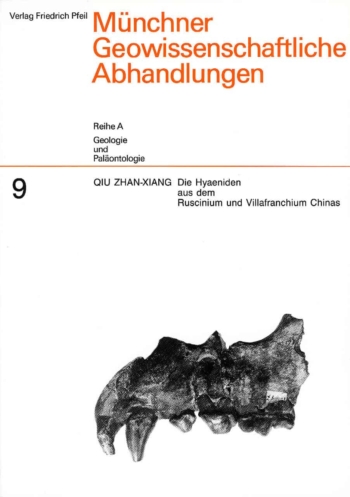
Die Hyaeniden aus dem Ruscinium und Villafranchium Chinas
30,00 €zzgl. Versandkosten / Versandkostenfrei in D
-
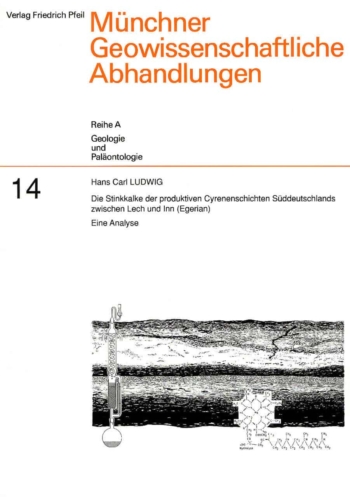
Die Stinkkalke der produktiven Cyrenenschichten Süddeutschlands zwischen Lech und Inn (Egerian)
30,00 €zzgl. Versandkosten / Versandkostenfrei in D
Wir sind gerne für Sie da
Verlag Dr. Friedrich Pfeil
Hauptstraße 12B
5232 Bergkirchen OT Günding – Germany
Tel.: +49 8131 61 46 590
Fax: +49 8131 61 46 591
E-Mail: info@pfeil-verlag.de
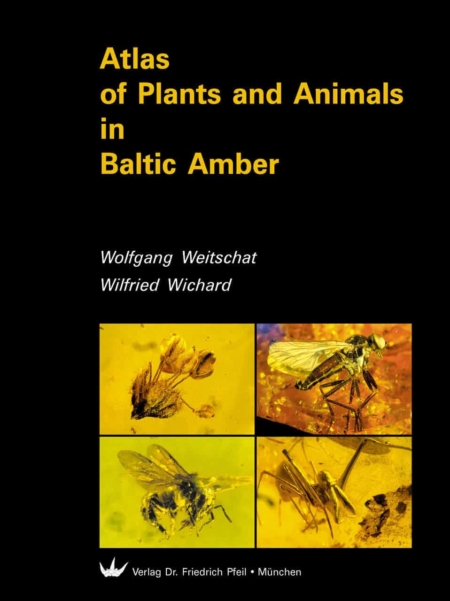
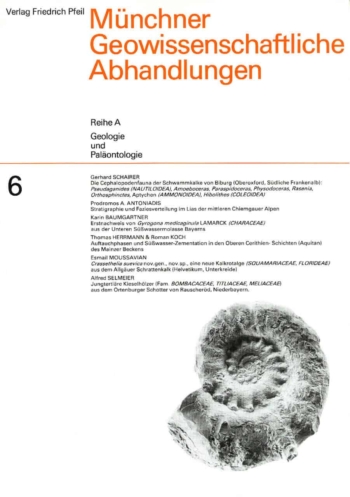
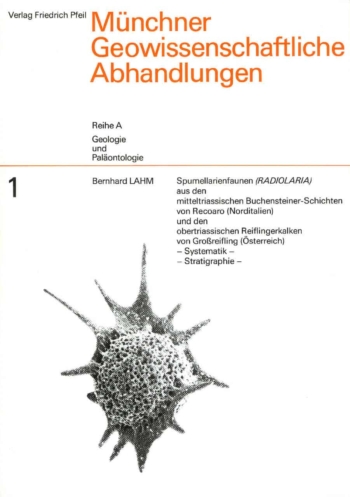
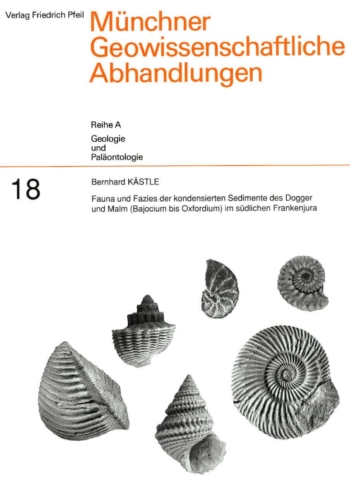
Rezensionen
Es gibt noch keine Rezensionen.